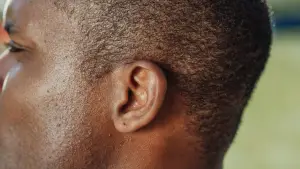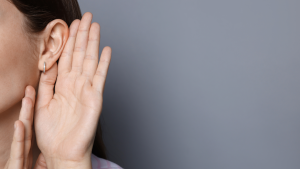Noise pollution is an invisible yet ever-present force that affects millions of people daily — often without them even realizing it. From the moment you wake up to the sound of an alarm clock to the constant hum of traffic or the blare of televisions and kitchen appliances, your ears are rarely at rest. While these sounds may seem harmless, over time, they can add up to a serious threat to your hearing health.
Unlike a loud explosion or concert, which causes immediate and noticeable ear damage, everyday noise pollution works subtly and gradually. It’s the background soundtrack of modern life — ever-present, frequently ignored, and increasingly harmful. In fact, prolonged exposure to moderate noise levels can be just as damaging to your hearing as short bursts of extreme volume.
This article explores how noise pollution silently undermines your hearing health. We’ll break down the science behind the damage, help you recognize the early warning signs, identify who’s most at risk, and provide practical steps to protect your ears in a noisy world. Whether you live in a bustling city or a quieter suburban area, understanding noise pollution is the first step toward safeguarding your hearing for the long term.
What Is Noise Pollution and Where Does It Come From?
Noise pollution refers to unwanted or harmful sounds that interfere with normal activities like sleeping, communicating, or simply enjoying a moment of quiet. Unlike visible pollutants in the air or water, noise is intangible — but its effects on the human body, especially the ears, are very real. Over time, continuous exposure to loud or persistent sounds can cause stress, disrupt sleep, and most importantly, damage your hearing.
So, where does noise pollution come from? The most common culprits are closer than you might think. Urban environments are filled with constant background noise from traffic, sirens, construction equipment, public transportation, and crowded streets. Even inside your home, everyday devices like hairdryers, blenders, vacuum cleaners, and television sets can contribute to overall noise exposure, especially when used frequently and at high volumes.
But noise pollution isn’t limited to cities. Rural areas may be quieter overall, but they’re not immune. Farm machinery, recreational vehicles, loud power tools, or even barking dogs can all add to the soundscape. Recreational activities such as concerts, sporting events, fitness classes, and even some hobbies like woodworking or motorcycling can also push sound levels beyond safe limits.
It’s important to understand that the danger doesn’t lie only in one-time loud bursts of sound. Chronic exposure to moderate levels of noise — especially without giving your ears time to rest — can result in cumulative damage. Think of it as a slow leak rather than a burst pipe: you may not notice it immediately, but the long-term consequences can be just as severe.
Noise pollution isn’t something most people actively think about, but its pervasiveness makes it a silent threat. The good news is that once you’re aware of the sources, you can begin taking steps to reduce your exposure and protect your hearing. Recognizing these everyday contributors to auditory stress is the first key step in defending your ears against long-term damage.
How Noise Affects the Ear: The Science Behind the Damage
To understand how noise pollution damages your hearing, it helps to know a little about how your ears work. Sound travels in waves, and when these waves enter your ear, they vibrate the eardrum. These vibrations are passed along tiny bones in the middle ear to the cochlea — a spiral-shaped organ in the inner ear filled with fluid and lined with thousands of microscopic hair cells. These hair cells translate the vibrations into electrical signals that the brain interprets as sound.
The problem is that these delicate hair cells are extremely sensitive and irreplaceable. Once damaged or destroyed by exposure to loud or constant noise, they don’t regenerate. That’s why hearing loss from noise exposure is often permanent.
The intensity of sound is measured in decibels (dB). Normal conversation typically measures around 60 dB, while traffic noise can range from 70 to 85 dB. Sounds above 85 dB — such as lawn mowers, leaf blowers, or concerts — can start causing damage after just a few hours of exposure. The louder the sound, the shorter the safe exposure time. For example, at 100 dB (a typical nightclub), hearing damage can occur in as little as 15 minutes without protection.
It’s not just the volume but the duration of exposure that matters. Even moderately loud environments, like open-plan offices or busy restaurants, can contribute to hearing fatigue over time. This phenomenon, known as temporary threshold shift, can cause your hearing to feel muffled after being in a noisy setting. Although hearing may return to normal, repeated instances increase the risk of permanent damage.
Another risk comes from the body’s stress response to noise. Loud and persistent noise doesn’t just affect the ears — it triggers the release of stress hormones like cortisol and adrenaline, which can increase heart rate and blood pressure. This means noise pollution can also contribute indirectly to health issues like cardiovascular disease, sleep disorders, and mental fatigue.
Understanding the science behind noise-related hearing damage underscores the importance of protecting your ears — not just from deafening blasts, but from the constant, creeping exposure to everyday noise. By managing both the volume and the duration of sound in your life, you can help preserve your hearing well into the future.
Symptoms and Early Warning Signs of Noise-Induced Hearing Loss
Noise-induced hearing loss (NIHL) often develops so gradually that many people don’t realize it’s happening until significant damage has occurred. Unlike sudden hearing loss caused by trauma or infection, NIHL creeps in quietly, sometimes taking years before noticeable symptoms appear. Being able to recognize the early signs is critical for timely intervention and hearing preservation.
One of the most common early symptoms is difficulty understanding speech, especially in noisy environments like restaurants or crowded gatherings. You might find yourself frequently asking others to repeat themselves, or you may feel like people are mumbling. High-frequency sounds, like children’s voices or consonants such as “s,” “f,” and “t,” are often the first to become harder to distinguish.
Another key warning sign is tinnitus — a persistent ringing, buzzing, or hissing sound in the ears when no external sound is present. While tinnitus can have several causes, it is often one of the first indicators that your ears have been overexposed to harmful noise levels. For some, tinnitus is temporary, but repeated exposure can make it a permanent condition.
You might also notice a sense of fullness in the ears or experience temporary hearing loss after being in a loud environment, such as a concert or a sporting event. Although your hearing might return to normal after a few hours, this temporary threshold shift is a red flag. Repeated instances can lead to lasting damage.
Other subtle symptoms include:
- Turning up the TV or radio louder than others prefer
- Feeling drained or mentally fatigued after conversations
- Avoiding social situations due to difficulty hearing
Many people dismiss these symptoms as part of aging, but hearing loss due to noise pollution can affect individuals at any age. The sooner it’s identified, the better the chances of slowing its progression or preventing further damage.
Regular hearing screenings — especially if you’re over 50 or frequently exposed to noisy environments — are a vital part of early detection. Audiologists can assess the type and degree of hearing loss and provide strategies for protection or assistive solutions if needed. Catching these signs early not only protects your hearing but also helps maintain your overall quality of life.
Who Is Most at Risk? Vulnerable Groups and Lifestyle Factors
Noise-induced hearing loss can affect anyone, but certain groups of people are at significantly higher risk due to age, occupation, environment, or daily habits. Recognizing these vulnerable populations helps us understand who needs to be especially proactive in protecting their hearing health.
Older Adults
As we age, our hearing naturally begins to decline — a condition known as presbycusis. However, when combined with decades of exposure to everyday noise pollution, the deterioration can accelerate. Older adults may not realize how much noise they’ve been exposed to over the years, and often dismiss hearing challenges as “just getting older.” But in many cases, long-term noise exposure has played a major role in that decline.
Urban Residents
Living in a city comes with a near-constant soundtrack: traffic, sirens, construction, subways, and crowded spaces. This environmental noise creates an ever-present auditory load that can wear down hearing sensitivity over time. City dwellers, especially those living near highways or industrial zones, are frequently exposed to sound levels above recommended safety thresholds.
Industrial and Construction Workers
Occupational exposure is one of the most well-documented risk factors for noise-induced hearing loss. Workers in factories, construction sites, airports, and agriculture are often exposed to machinery and tools that exceed safe decibel levels — sometimes for hours each day. Despite safety regulations, inconsistent use of protective gear or inadequate enforcement can leave workers vulnerable.
Young Adults and Teens
Surprisingly, younger populations are also at rising risk — not from factories or traffic, but from earbuds and headphones. Many people listen to music or podcasts at volumes far above safe limits, especially in noisy environments where they crank up the volume to drown out background noise. The widespread use of personal audio devices has led to a sharp increase in early-onset hearing issues.
Children
Children’s ears are more sensitive to noise, and repeated exposure to loud environments — such as loud classrooms, recreational events, or even toys that emit high-decibel sounds — can set the stage for hearing problems later in life. They may not be able to articulate hearing issues clearly, so symptoms often go unnoticed until they’re more advanced.
Lifestyle Choices
Other lifestyle factors also contribute to hearing risk. Regular attendance at loud events (concerts, sporting arenas, clubs), hobbies involving loud equipment (motorcycling, woodworking), and even common household tools (leaf blowers, blenders) can add up over time. People in these categories may not think of themselves as “at risk,” but their accumulated exposure tells another story.
Understanding who is most vulnerable helps tailor prevention efforts and encourages routine hearing checkups. Whether it’s protecting the ears of an aging parent, a construction worker, or a music-loving teen, early awareness and smart habits can make all the difference in long-term auditory health.
Protecting Your Ears: Tips to Reduce Exposure and Preserve Hearing
The good news about noise-induced hearing loss is that it’s almost entirely preventable. By understanding the sources of harmful noise and taking proactive steps, you can dramatically reduce your risk and preserve your hearing well into the future. Whether you live in a bustling city or a quiet suburb, the following strategies can help you protect your ears from everyday sound exposure.
Use Hearing Protection
Earplugs and earmuffs aren’t just for construction sites — they’re effective tools in many everyday scenarios. Keep a pair of foam earplugs handy for loud environments like concerts, sporting events, or even noisy commutes. For those exposed to loud noise regularly (e.g., power tools, lawn equipment), consider investing in high-quality earmuffs or custom-fitted earplugs for maximum comfort and effectiveness.
Monitor and Limit Volume Levels
One of the most common sources of hearing damage is personal audio devices. If you’re using earbuds or headphones, follow the 60/60 rule: listen at no more than 60% of maximum volume for no more than 60 minutes at a time. Noise-canceling headphones can also help you hear clearly at lower volumes, especially in loud settings like airplanes or public transport.
Create a Quieter Home Environment
Your home should be a place of auditory rest. Reduce ambient noise by using carpets, curtains, and soft furnishings that absorb sound. Consider upgrading to quieter appliances when replacing old ones — many modern devices are designed with lower decibel ratings. If outdoor noise is a problem, double-glazed windows or soundproofing materials can make a big difference.
Take Listening Breaks
Just like your eyes need breaks from screen time, your ears need a rest from constant sound. After being in a noisy environment, take time to sit in a quiet space and allow your hearing to recover. Even 15–20 minutes of silence can help your auditory system reset and reduce stress on your ears.
Schedule Regular Hearing Checks
Many people wait until they experience significant hearing loss before seeing a professional. However, regular hearing screenings — especially if you’re over 50 or have frequent noise exposure — can catch problems early. An audiologist can track changes in your hearing and recommend protective strategies or hearing aids if needed.
Raise Awareness
If you’re a parent, caregiver, or employer, educating others about the dangers of noise exposure can help protect those in your circle. Children and teenagers, in particular, may not realize how their daily habits are putting their hearing at risk. Workplace safety programs should also emphasize consistent use of protective gear and noise monitoring.
Protecting your hearing doesn’t require drastic lifestyle changes — just a few mindful adjustments and protective measures. The goal isn’t silence, but smart sound management. By becoming more aware of your auditory environment and making ear-friendly choices, you can enjoy the sounds of life while keeping your hearing sharp for years to come.
Conclusion
Noise pollution may not always grab your attention like a sudden loud bang, but its long-term effects on your hearing health are just as serious — and far more insidious. Every day, we’re exposed to a steady stream of sounds that can slowly chip away at our hearing, often without us noticing until the damage is already done. From the hum of city traffic to the volume on your earbuds, it all adds up.
The key message is clear: noise-induced hearing loss is not only real, it’s also largely preventable. By understanding where noise pollution comes from, how it damages the ears, and who is most at risk, you’re better equipped to take proactive steps to protect your hearing. Whether it’s using ear protection, lowering the volume, or simply giving your ears a break, small actions can lead to big benefits.
Hearing is a critical part of staying connected to the world around us — to conversations, to nature, to music, and to loved ones. Don’t let noise pollution rob you of that connection. With awareness and thoughtful prevention, you can ensure your hearing remains strong and vibrant, no matter what life sounds like around you.
FAQ
What is considered a dangerous noise level for hearing?
Sounds above 85 decibels (dB) can begin to damage hearing if you’re exposed for extended periods. Common examples include lawn mowers, heavy traffic, and loud music. The higher the volume, the shorter the safe exposure time — for instance, 100 dB can cause damage in as little as 15 minutes without hearing protection.
Can everyday sounds really lead to hearing loss?
Yes. While a single loud noise can cause immediate damage, most hearing loss results from repeated exposure to moderate noise over time. Household appliances, city traffic, and even frequent use of earbuds at high volumes can contribute to cumulative hearing damage.
How can I tell if noise is damaging my hearing?
Early signs include ringing in the ears (tinnitus), difficulty understanding speech, needing to turn up the volume on devices, or feeling drained after conversations. If you notice any of these symptoms, it’s a good idea to schedule a hearing test with a qualified audiologist.
Are children at risk from noise pollution too?
Absolutely. Children’s ears are more sensitive, and toys, video games, noisy classrooms, or loud recreational activities can contribute to early hearing damage. Teaching children safe listening habits and monitoring volume levels can help protect their hearing as they grow.
Is it too late to protect my hearing if I already have some loss?
It’s never too late to start protecting your hearing. While existing damage can’t be reversed, taking steps now — like reducing noise exposure and wearing hearing protection — can prevent further loss and preserve the hearing you still have.
This article is for informational purposes only and is not a substitute for professional medical advice, diagnosis, or treatment. If you are concerned about your hearing or ear health, please consult a qualified healthcare provider.






